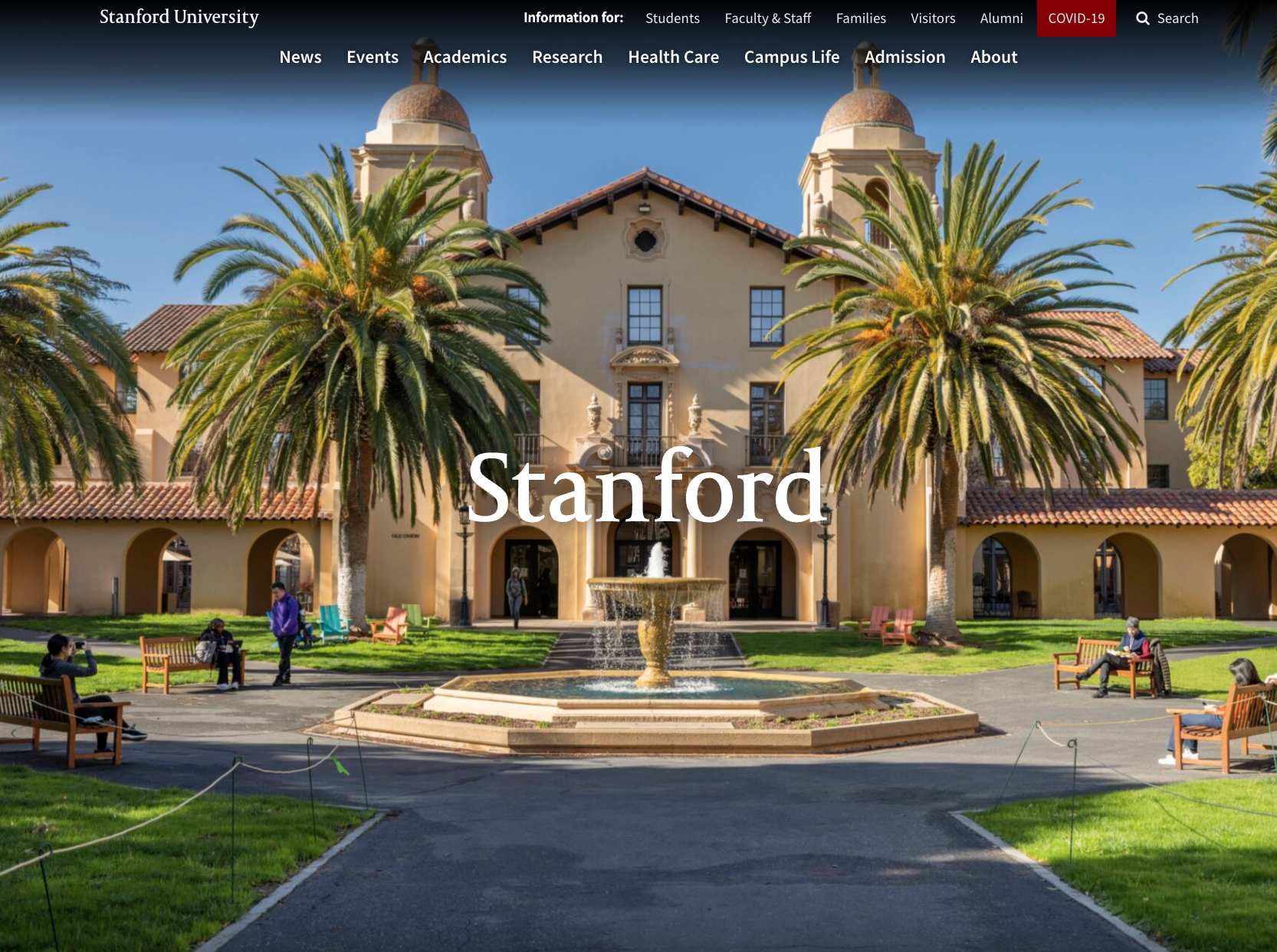How to Determine Which College is Right for You?

How to Determine Which College is Right for You| A Last-Minute Guide on How Top Pick the Perfect College
Trying to help your child pick the perfect college can feel overwhelming, and the stress level rises as the May 1 deadline approaches.
But how do you decide which college will be the perfect one when you have multiple schools to choose from?
To solve your problem, you only need to answer 3 questions:
-
will this college be a good Match & Fit?
-
will this college and major be worth the cost and end up having a positive Return on Investment?
-
will the outcome lead my child to an exponentially different future?
The answers to these 3 questions will help your child decide which is the perfect college for them.
College Planning vs. Future Planning
The goal of a college planner is to get a high school student into college. College planners list all the students they place in prestigious schools and even post testimonial after testimonial on their website, screaming, "Look how wonderful I am as a college planner!"
But how many of these kids graduated from these colleges?
The college planner doesn't care so much where you graduate from, but the Future Planner does.
A future planner helps design a path that leads students to and through college.
College is an investment of time and money. Those who attend college want to achieve a different future, not just a better one.
College provides a foundation of life skills that can lead to career success, so don't just plan your way there. Planning your future is about what outcomes you can expect after you graduate.

1) Match & Fit Method
The Match & Fit Method replaces the traditional terms of Reach, Target, and Safety schools.
The terms Reach, Target, and Safety School establish a false relationship between you and the college.
If you were hoping to get into your Reach school, it means that school is too good for you and you do not belong (which is why it is a Reach school). If you were accepted to your Target school, you are disappointed because it was not your Reach school, and you feel like you are settling.
If you were accepted to a Safety school, you are above those students and do not belong.
Because of the failures of those terms, I developed the Match & Fit Method. Now we need to figure out how to apply it.
Match - A Data-Influenced Approach to Searching for Colleges
When you Match at a college, your grade point average is within + or - 0.33-grade points of the average incoming freshman grade point average, and your ACT or SAT scores are within 15 percentile points of that school's 75 percentile scores.
For example, the University of Nevada-Reno has an average GPA of 3.38, the 75th percentile score on the ACT is 26, and SAT is 1200.
Student A has a grade point average of 3.45 and an SAT score of 1150, so UNR is a good Match because both the GPA and test scores are within the recommended threshold.
Student B has a grade point average of 3.85 and an SAT score of 1400 (significantly above the recommended threshold). Based on the numbers, UNR MAY NOT be a good Match for Student B.
**Just because a school is or is not a good match does not mean it is not a good fit.**
Fit - An Emotion-Influenced Approach to Searching for Colleges
Match statistics only provide information about the cohort of first-year students. To determine if the school Fits your child's needs beyond the data, you need to understand what the school is known for and how it connects emotionally.
The Match concept is meant for the mind (logic-driven), while the Fit concept is meant for the heart (emotion-driven).
Pay attention to these categories to see what their heart says about the schools:
Activities
Your child will have a lot of free time at college because the schedule and pace are different from high school. Consider exploring new interests by pursuing things different from your current interests. You never know; your interests may change in the future.
Alumni
Does the school have proud alumni? Small colleges may not have large organizations but may have very passionate ones. Do former students come back for homecoming or participate in alumni events? Do these former students post proudly on social media? Or, do you hear people bashing or making excuses for their college (e.g., it was pretty good for a Safety School)?
One possible way to determine if a school has made an exponential difference in a person's life is their desire to support the school's brand proudly.
Campus and Culture
Some people want a campus in the middle of a big city, while others want a campus in the middle of nowhere to get the feel of a small college town. Do not just think about what you like at the moment. If you choose a small school with fewer than 2,000 students, will you outgrow it in 4 or 5 years? Or will the allure of the big city eventually get the best of you, and you'll long for a slower pace?
Career Options
What is the 20-year outlook for your field of study? Since there are no statistics on the future, you'll have to do a little fortune-telling here. You can look for trends and emerging markets but ignore fads. Today's newest and coolest may not exist tomorrow. Look for schools with innovative degree programs (more on that below).
Location & Size of College
Most college applicants have an ideal setting in their minds for college. But should they?
Should location be that big of a factor?
Location is a big deal to college planners, but future planners do not worry as much. College planners think about what it will be like in your first year. Future planners think you will adapt and that change might be good for you (the younger you are, the easier it is to adapt to change).
Also, you may have to move later in life because of a job or family circumstances. Knowing that you can adapt will set you up for a lifetime of success.
College can teach you many different things if you let it.
Student Support
You will need help from the administration, your department, or a professor at some point in your college career. But how do you know how much assistance you will get?
Many schools are outstanding in academic advising but do not provide adequate support in times of crisis. Take the time to research how departments and professors offer help before you enroll.
Put Student Support to the Test
To determine how much support you receive, test it!
You are an admitted student, so you have the right to expect some kind of response. Call or write the admissions office and ask a question. What kind of answer will you get back, if any?
Call financial aid, your degree program, and even a professor you may have heard at Admitted Student's Day.
How long did it take you to get a response? Minutes, hours, or days? Maybe even never?
If your request was ignored or they did not get back to you, you can take that as an indicator of how the school will treat you once you are admitted.
Varied and Interesting Majors
Look for a college with an innovative approach to education that is not afraid to combine majors (e.g., creative writing and video game design or mechatronics and engineering). COVID has changed the world, and you should attend a college that is not afraid to take an innovative approach that will help you be future-ready.
An important detail about majors is that 80% of students change their major at least once during their studies.
80%!
Why is that? Do kids come to college unprepared? Do kids change so much during these years that they have to change their major to meet their new life goals?
With 80% of students reporting a change in major, it is safe to assume that you will change as well.
You may be in the wrong place if there is not much to change or if your college discourages major changes.
2) Is College Worth the Cost | What Is the Lifetime ROI of a College Major
The Match and Fit Method gives you a significant advantage when designing your child's future. However, to think like a Future Planner, you must focus on what the college can do for your child, not what your child can do for the college.
To do this, we need to find out if the college and program you have chosen will have a positive lifetime ROI.
Cost of Going to College
The cost of a college education has skyrocketed in the last 20 years, outpacing people's income by nearly 10 times!
Check out the yellow line (college tuition) compared to the green line (starting salary).

With costs so high, many wonder if it's even worth it to go to college.
The answer to that question used to be an unqualified yes. Now, the answer isn’t so clear.
While several statistics show that college graduates earn more and stay employed during economic downturns, like all statistics, they do not tell the whole story.
If you dig deeper into the statistics, you will find that a college degree from the right college in the right field can lead you to an exponentially different future.
But how do you know what the right college and degree are?
Use the 5 | 10 | 20 Rule.
How to Use the 5 | 10 | 20 Rule
We must focus on student outcomes to avoid past problems where college did not pay off.
Open another browser tab and go to the digital toolbox I created for you on EngeniusLearning.com.
Here you can search for the following:
-
College
-
Major
-
5-Year Grad Rates
-
10-Year Positive ROI Threshold
-
20-Year Earnings Estimate
-
Lifetime Return on Investment
Below is a summary of what each category means and how to apply it.
5 - This number represents the percentage of students who graduate in less than 5 years.
The current U.S. average for students graduating in less than five years is 63.8%.
Four years to graduation was the norm for decades, but the time needed to graduate has gradually increased, and five years is now more the standard.
Going to college longer than five years strains your financial and emotional reserves. While going to college can be the best time of your life, it can also be costly. Make sure you can and want to afford the cost of your education.
Look for colleges whose average 5-year graduation rate is higher than the national average (my threshold for my students is 70%). This will help you avoid paying too much for an education that does not meet your expectations. You may come across an excellent school for you with low graduation rates. If this is the case, keep an eye on that school, but be sure to find out why the graduation rates are so low.
10 - This number represents your threshold for a positive ROI in your degree and college.
A positive ROI in less than 10 years after graduation means your earnings exceed your investment.
Be suspicious of colleges and degree programs that take longer than 10 years for the ROI to turn positive. Colleges are aware of student outcomes, and if they continue to "sell" you a degree that never pays off, that college degree is an expense, not an investment.
20 - The 20-year outlook for this field of study
Are you majoring in an up-and-coming field with good job prospects?
Will this major place you in a field where you can work for the next 20 years? Are you studying a subject that has previously performed poorly or a field with limited prospects?
They (whoever they are) say, "Do what you love, and you will never work a day in your life." That may be true if you have the means to make a living.
When choosing a field of study, your future will be easier if what you love is a dynamic, high-growth field with good job prospects and you can make a living wage.
If your chosen field subjects you to poverty, make your major a minor (this way, you can still major in what you love). Then, find an area that interests you with a bright future, and make that your major! It's the best of both worlds!
What sometimes works even better is getting an MBA or law degree to make a great career in the field you love.
Career Categories
Future High-Growth Careers
• Artificial Intelligence
• Blockchain
• Crypto
• Data Science
Stable, Always In-Demand Fields
• Accounting
• Computer Science
• Engineering
• Medicine
Historic Underperformers
• Education
• Journalism
• Liberal Arts
• Visual Arts
Author's Note: I have a degree in the humanities, love it, and have a great career. But historically, this field has a low or negative ROI.
Go to the Digital Toolbox at EngeniusLearning.com to search for over 30,000 college and major combinations.
3) Will a College Degree Lead to an Exponentially Different Future
Student Outcomes Matter Most
Future planners are interested in exponentially different outcomes for your child.
Can the college and program chosen provide this?
Is the college committed to the success of its students, or is it more interested in its own success?
Based on the data you have already found, you can determine whether a college is more mission-driven (missionary) or profit-driven (mercenary).
A school that focuses on its students, with high graduation rates and a high lifetime return on investment, is missionary.
A school with overcrowding issues, declining graduation rates, low lifetime ROI majors, and advertises how wonderful it is on its website rather than showcasing student achievement is more mercenary than missionary.
Who or What Is the Focus? | Using the Narcissus Rule to Determine If a College Is Missionary or Mercenary
The Narcissus Rule

In case your mythology is rusty, here's a quick summary:
The Greek myth of Narcissus tells of the tragic death of a stunningly handsome young man who becomes absorbed in looking at himself in a pool of water. He eventually drowns, trying to touch and possess his image.
The word narcissistic comes from this myth and is the perfect word to describe many colleges.
Who is the Focus of the Web Page & Social Media Accounts
Look at the websites of the colleges and see what they focus on.
Does the college showcase students and student outcomes?
The image below is from the Johns Hopkins homepage. Their focus is on student outcomes.

Or does the college lovingly stare at their reflection and tell you how wonderful they are?
This picture is from the Stanford homepage in April of 2023.

This picture is from the Stanford homepage in April of 2022.
So in case anyone thinks I'm being unfair, or this is a mistake, this is their focus.


The images above are from the homepage of Stanford’s website. You need to get to the 3rd page below the fold in order to find out what is in it for their students.
The more the website and corporate communications are about the college itself and not the students, the sooner you should know where you fit into the college's financial ecosystem.
Are students the focus or just pawns for the college's more lucrative ventures?
Is the college selling you on features or benefits of studying at their college?
While this is not the only method for selecting a college, you can include it in your list of pros and cons.
The college selection process is complex. Data is only one side of the coin, and emotions and stress add to the uncertainty.
However, if you combine the Math & Fit Method, the 5 | 10 | 20 Rule, and focus on finding an exponentially different outcome, your child will have the best possible chance of picking the perfect college for them.
Stay connected with news and updates!
Join our mailing list to receive the latest news and updates from our team.
Don't worry, your information will not be shared.
We hate SPAM. We will never sell your information, for any reason.


